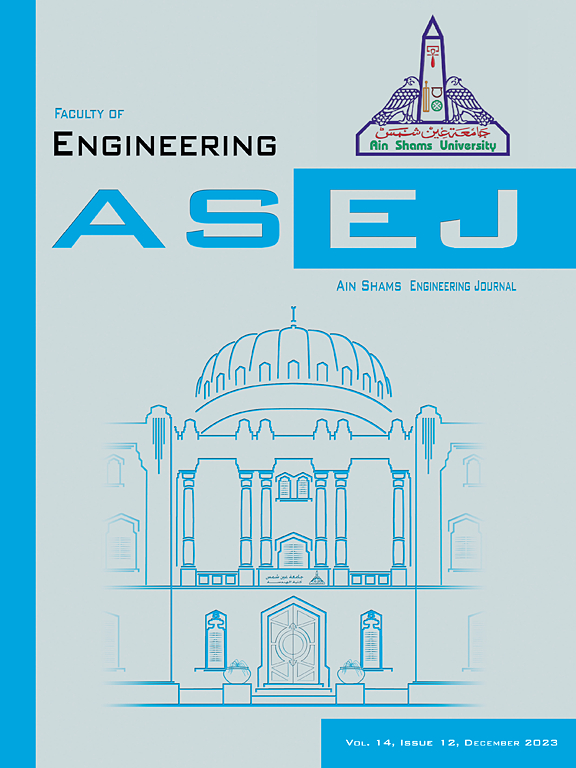用于雷达截面积减小的PB相位超表面优化的先进1位算法
IF 6
2区 工程技术
Q1 ENGINEERING, MULTIDISCIPLINARY
引用次数: 0
摘要
Pancharatnam-Berry (PB)超表面因其特殊的相位控制能力而受到广泛关注。引入了各种优化技术,即使使用相同的单元电池设计,也会产生不同的结果。我们探索了结合粒子群优化(PSO)的阵列方向图合成(APS)、随机序列、专门的0-1编码、非线性拟合的遗传算法以及结合远场散射和退火算法的PSO等方法。其中,退火算法显示出最有效的雷达截面(RCS)缩减。提出的设计工作在10-21.4 GHz的频率范围内,中心频率为17 GHz。10 dB远场RCS压缩带宽从10.5 GHz扩展到19.5 GHz,在线极化法向入射波下实现了52.94%的相对带宽。对于斜入射线偏振,在入射角为30°时,超表面保持有效的RCS减小。在工作频率下,该设计采用尺寸为0.34λ × 0.34λ、厚度为0.145λ的单晶片。实验结果与仿真结果吻合较好,验证了所提设计的准确性。此外,与先前提出的方法相比,该方法在带宽和RCS降低方面表现出优越的性能。编码超表面由不同数量的单元组成,优化的结构通过极化转换、散射和反射等机制实现低后向散射。虽然退火算法在整个频谱上表现出一致的RCS降低(>10 dB),但其他编码策略实现了<;在特定波段降低10db。这些发现说明了退火算法在电磁波操纵中的巨大潜力,以及在隐身技术中的应用。本文章由计算机程序翻译,如有差异,请以英文原文为准。
Advanced 1-bit algorithmic approaches to PB phase metasurface optimization for radar cross-section reduction
The Pancharatnam-Berry (PB) metasurface has gained significant attention for its exceptional phase control capabilities. Various optimization techniques have been introduced, yielding diverse results even with the same unit cell design. We explored methods such as array pattern synthesis (APS) with particle swarm optimization (PSO), random sequence, specialized 0–1 coding, a genetic algorithm with a nonlinear fitting method, and PSO combined with far-field scattering and the annealing algorithm. Among these, the annealing algorithm demonstrated the most effective radar cross-section (RCS) reduction. The proposed design operates over a frequency range of 10–21.4 GHz, with a center frequency of 17 GHz. The 10 dB far-field RCS reduction bandwidth extends from 10.5 to 19.5 GHz, achieving a relative bandwidth of 52.94 % at normal incidence under linearly polarized normal incidence waves. For oblique incidence linear polarization, the metasurface maintains effective RCS reduction up to an incidence angle of 30°. The design utilizes unit cells with dimensions of 0.34λ × 0.34λ and a thickness of 0.145λ at the operating frequency. Experimental results closely match the simulated outcomes, validating the accuracy of the proposed design. Furthermore, compared to previously proposed methods, this approach demonstrates superior performance in bandwidth and RCS reduction. The coding metasurface comprises varying numbers of unit cells, with optimized configurations leading to low backscattering through mechanisms like polarization conversion, scattering and reflection. While the annealing algorithm demonstrates consistent RCS reduction (>10 dB) across the entire frequency spectrum, other coding strategies achieve < 10 dB reduction in specific bands. These findings illustrate the immense potential of the annealing algorithm for electromagnetic wave manipulation, with applications in stealth technology.
求助全文
通过发布文献求助,成功后即可免费获取论文全文。
去求助
来源期刊

Ain Shams Engineering Journal
Engineering-General Engineering
CiteScore
10.80
自引率
13.30%
发文量
441
审稿时长
49 weeks
期刊介绍:
in Shams Engineering Journal is an international journal devoted to publication of peer reviewed original high-quality research papers and review papers in both traditional topics and those of emerging science and technology. Areas of both theoretical and fundamental interest as well as those concerning industrial applications, emerging instrumental techniques and those which have some practical application to an aspect of human endeavor, such as the preservation of the environment, health, waste disposal are welcome. The overall focus is on original and rigorous scientific research results which have generic significance.
Ain Shams Engineering Journal focuses upon aspects of mechanical engineering, electrical engineering, civil engineering, chemical engineering, petroleum engineering, environmental engineering, architectural and urban planning engineering. Papers in which knowledge from other disciplines is integrated with engineering are especially welcome like nanotechnology, material sciences, and computational methods as well as applied basic sciences: engineering mathematics, physics and chemistry.
 求助内容:
求助内容: 应助结果提醒方式:
应助结果提醒方式:


